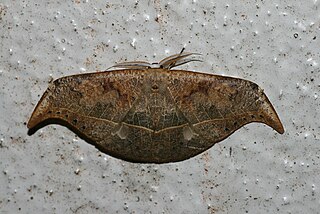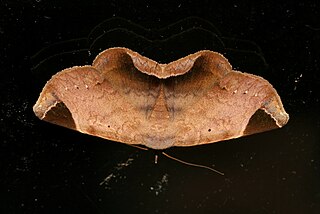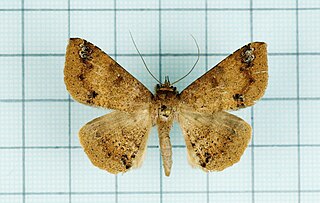| Pseudojana pallidipennis | |
|---|---|
| Scientific classification | |
| Kingdom: | Animalia |
| Phylum: | Arthropoda |
| Class: | Insecta |
| Order: | Lepidoptera |
| Family: | Eupterotidae |
| Genus: | Pseudojana |
| Species: | P. pallidipennis |
| Binomial name | |
| Pseudojana pallidipennis Hampson, 1895 | |
| Synonyms | |
| |
Pseudojana pallidipennis is a moth in the family Eupterotidae. It was described by George Hampson in 1895. [1] It is found in Myanmar and the north-eastern Himalayas. [2]

Moths comprise a group of insects related to butterflies, belonging to the order Lepidoptera. Most lepidopterans are moths, and there are thought to be approximately 160,000 species of moth, many of which have yet to be described. Most species of moth are nocturnal, but there are also crepuscular and diurnal species.

Eupterotidae is a family of insects in the order Lepidoptera with more than 300 described species.
Sir George Francis Hampson, 10th Baronet was a British entomologist.
The wingspan is about 130 mm. Adults are pale ochreous brown irrorated (sprinkled) with fuscous, the forewings with slight dark suffusion from the base through the cell and extending as dentate dark marks along the subcostal and median nervules. There is an oblique fuscous line from the costa near the apex to the middle of the inner margin, with three lines on a brownish ground colour beyond it, then two other lines. There is a series of fuscous specks from the apex on a slight band of fuscous suffusion and a submarginal series of black specks connected by traces of a crenulate line. The hindwings have an antemedial oblique diffused fuscous line followed by five lines, then a diffused fuscous band and a submarginal series of fuscous specks. [3]

The wingspan of a bird or an airplane is the distance from one wingtip to the other wingtip. For example, the Boeing 777-200 has a wingspan of 60.93 metres, and a wandering albatross caught in 1965 had a wingspan of 3.63 metres, the official record for a living bird. The term wingspan, more technically extent, is also used for other winged animals such as pterosaurs, bats, insects, etc., and other fixed-wing aircraft such as ornithopters. In humans, the term wingspan also refers to the arm span, which is distance between the length from one end of an individual's arms to the other when raised parallel to the ground at shoulder height at a 90º angle. Former professional basketball player Manute Bol stands at 7 ft 7 in (2.31 m) and owns one of the largest wingspans at 8 ft 6 in (2.59 m).










